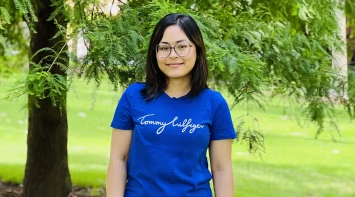103 articles

How This UTS Graduate Went from Student to Student Representative
We chat with Manisha Shrestha as part of our Student Success Stories

IQ and the University of Auckland: Targeting and Uncovering the Blind Spots
IDP chats with Yu-Shu Hwang of the University of Auckland about problems, solutions, and results

How IDP Is Tracking Student Reactions to Policy Updates Around the World
Australia's Migration Strategy sparked the need for a new survey to assess its impact on the sector

How Institutions are Streamlining their Application Process Through FastLane
IDP’s offer-in-principle service puts institutions in the ‘fast lane’ to student recruitment recovery

The Growing Role of AI in International Student Recruitment
Exploring the importance of AI in the recruitment process compared with human-to-human interactions
How IDP Helped Sarbjeet Singh Embark on his Award-Winning Student Journey
Victorian International Student of the Year, Sarbjeet Singh discusses his journey from Chandigarh to Geelong

International Students Open to New Opportunities Amid Global Policy Changes
Findings from IDP's Voice of the International Student Pulse Survey

Indonesia: The Rising Source Market of Southeast Asia
Our latest regional source market report focusing on Indonesia as a growing diversity market

5 Things We Learnt from the IEAA National Symposium 2024 | Diversification
Here’s a quick-fire rundown of the most enlightening and surprising talking points from this year’s event.

Changing Parental Perceptions and Motivations in the International Education Decision Making Process
Parents are now more concerned about graduate employment opportunities than distance from friends and family.

Diversification: How Institutions Can Meet This Challenge in 2024
Helping institutions diversify source market, modality, and program portfolios via data-driven strategies.

Connecting Prospective Students with Experienced Students: Why Peer-to-Peer Engagement is Valuable and Effective
Powerful influencers, advocates for your brand – student ambassadors are key for recruitment.